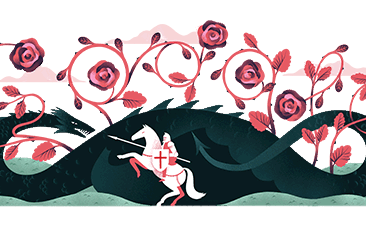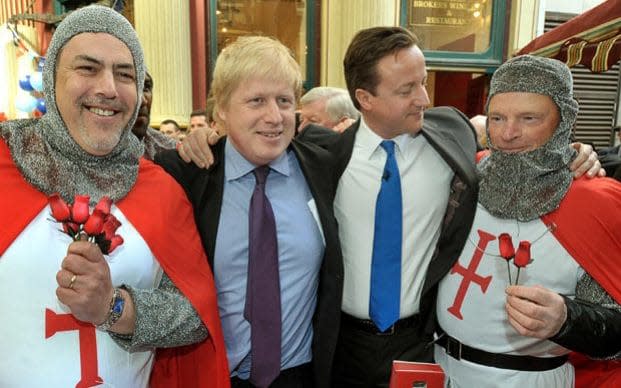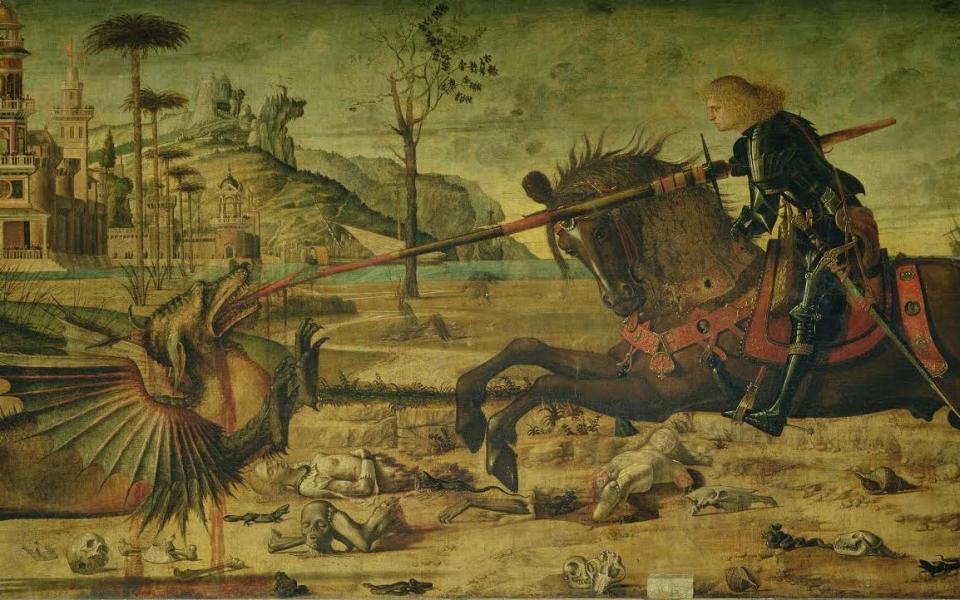St George's Day 2017: Everything you need to know about England's (and Ethiopia's) dragon-slaying saint

Happy St George's Day! The celebration of England's patron saint takes place every year on April 23. Here's are some fascinating facts...
What’s St George's Day all about?
St George’s Day is England's national day and is celebrated on April 23 each year. The day remembers St George - England’s patron saint.
A Christian martyr, St George represents traditional English chivalry and bravery, even though he wasn't English, and probably never set foot in this green and pleasant land.
Even so, we English have taken him under our wing and made him the symbol of our nation.

His emblem is a red cross on a white background, which is England's flag and forms part of the Union Flag – the flag of the United Kingdom of Great Britain and Northern Ireland.
Legend has it that St George slayed a dragon and saved a princess when he was a soldier in the Roman army. What a guy.
How does England celebrate?
In 1415, St George’s Day was declared a national feast day and holiday in England.
It grew to become a really big deal (almost as big as Christmas) until the 18th century when celebrations waned after England united with Scotland in 1707.
Now people go to work as normal, although in recent years there’s been a push to make the day a national holiday in England again - even though a report in 2012 found that each bank holiday costs Britain £2.4bn in lost work.
Campaigners say it's not fair, as Ireland gets a bank holiday for St Patrick's Day and Scotland gets a day off for St Andrew's Day.
Fervent English fans mark the day up and down the country with parades, dancing and waving flags from buildings and pubs. Some people wear a rose, England's national flower, on their lapel.

Sometimes St George's flag has been controversial
Research in 2013 by the think tank British Future found that many English people worry that national symbols like the St George's Cross may be interpreted as racist.
The report blamed the “extreme street hooligans of the English Defence League” for “toxifying” the St George’s Cross, although it said politicians should also take responsibility for failing to “speak up for the inclusive patriotism of the English majority”.

Meanwhile, in 2014 Labour front-bencher Emily Thornberry was forced to apologise after being accused of holding working class voters in "contempt" by appearing to mock a terraced family home draped in England flags.
The close ally of former Labour leader Ed Miliband and the party's shadow attorney general, was on the by-election campaign trail in Rochester and Strood when she Tweeted a photo of the house accompanied by the caption "image from #Rochester".
The tweet sparked outrage online and Mr Miliband was forced to intervene and made it "very clear" that he believes people should be able to fly the England flag with pride.

Tell me more about St George
St George was apparently born in Cappadocia – the area now known as Turkey around the year 280.
As a soldier, he quickly rose through the ranks of the Roman army.
However, he protested against the pagan Emperor’s persecution of Christians and was later imprisoned, tortured, dragged through the streets and beheaded in Palestine on April 23, 303.

He stayed loyal to his faith until the very end - and apparently the Emperor's wife was so inspired by his bravery that she too became a Christian, and was also executed.
St George is buried in Israel
In 1222 the Council of Oxford declared April 23rd to be St George’s Day. However, it wans't until 1348 that St George became the Patron Saint of England.
St George's cross emblem was adopted by Richard The Lion Heart and brought to England in the 12th century. The king's soldiers wore it on their uniforms during battle to avoid confusion.

Is the dragon bit true?
Sadly not. The legend apparently originated from the town of Silene in Libya which was apparently guarded by a ferocious dragon.
In order to get water, residents had to offer a sacrifice each day, chosen by the townsfolk. One day, they agreed to offer their princess up for sacrifice.
On the day she was due to be killed, a knight from the Crusades came riding by on his white horse, dismounted, drew his sword and killed the dragon, saving her life.
As a mark of their gratitude to St George the people of Silene apparently converted to Christianity.
The fairytale of St George and the dragon has captivated millions of children over the years.
5 English things that are not actually English...
St George in British culture and around the world
St George is not even exclusively England’s patron saint. His iconography and coat of arms can be found on flags in countries and cities across the world.
Places including Portugal, Lithuania, Romania, Germany, Greece, Istanbul and Ethiopia also celebrate him.
In Britain, St George has also inspired medals for bravery. During the Second World War, King George VI established the George Cross - the highest such award that a civilian can earn.
The George Medal is second behind it. Both medals depict the patron saint slaying the dragon top his horse.
St George's flag is always present at English football, cricket and rugby matches and waved by millions of patriotic supporters.

